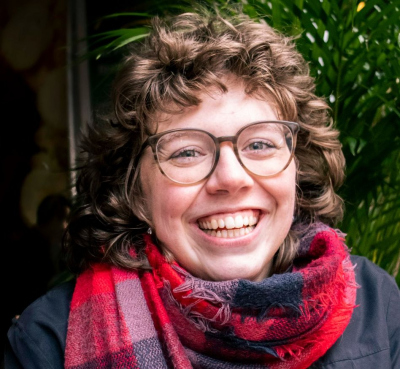- Graduate School GLOMAR
- PhD student members
- Rianne van Kaam
Rianne van Kaam
| Institution: | University of Bremen |
| Office: | NW2 C2290 |
| Phone: | +49 421 218 - 65586 |
| E-mail: | [Bitte aktivieren Sie Javascript] |
| Other webpage(s): | Rianne's MARUM web page |

PhD Project
Role of Fe in organic carbon cycle and microbial activity in the deeply buried marine sediments
About 10-20% of total organic carbon in marine sediments is bound to reactive iron in the form of sorption or coprecipitation. Due to its high stability, these associations between organic carbon and reactive iron (OC-Fe) might serve as a sink for organic carbon. However, most studies are focusing on surface sediments, remaining it unclear how the stability of OC-Fe maintains in deep sea marine sediments and thus its influence on long-term OC burial and the Fe cycle.
Conventionally, Fe(III) is used as a electron acceptor during mineralization of organic matter after depleting of sequentially O2, NO3- and Mn(IV), and before SO4-2 and CO2 resulting in the release of Fe(II). However, the presence of OC-Fe as well as the release of Fe(II) have been observed in the methanic zone, thus below the “classic” Fe reduction zone. To the best of our knowledge, a connection to possible reduction of OC-Fe has not been made yet remaining it unclear whether the observed Fe reduction in methanic sediments is coupled to OC-Fe.
To get a better understanding about what happens to these associations in deeply buried marine sediments, more clarity is first needed on the formation of OC-Fe starting from the input of OC and Fe into the ocean. In the first phase of this PhD project, the aeolian input material will be addressed. Dust input is a major source of Fe supply to the ocean. The sinking particles can adsorb dissolved organic compounds (DOM). The sorption efficiency depends on various factors. It is assumed that this process of DOM adsorption reduces or prevents the bacterial usefulness of reactive Fe bound in the particles as electron acceptors. To test this, sorption experiments will be conducted with dust collected from ephemeral rivers in Namibia.
Thesis Committee
| PD. Dr. Matthias Zabel | University of Bremen, MARUM - Center for Marine Environmental Sciences and Faculty of Geosciences |
| Prof. Dr. Kai-Uwe Hinrichs | University of Bremen, MARUM - Center for Marine Environmental Sciences and Faculty of Geosciences |
| Prof. Dr. Michael Friedrich | University of Bremen, Faculty of Biology |
| Prof. Dr. Jan-Hendrik Hehemann | University of Bremen, MARUM - Center for Marine Environmental Sciences, Faculty of Geosciences, and Faculty of Biology |
| Dr. Martin Kölling | MARUM - Center for Marine Environmental Sciences, University of Bremen |


